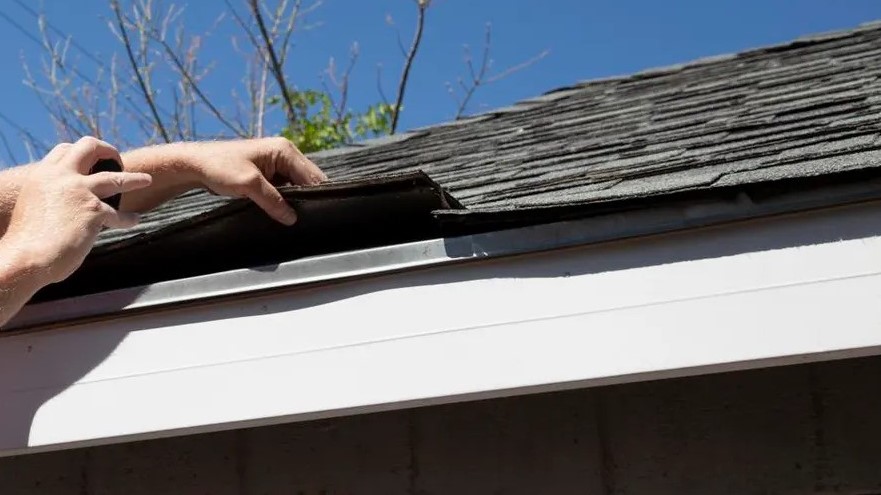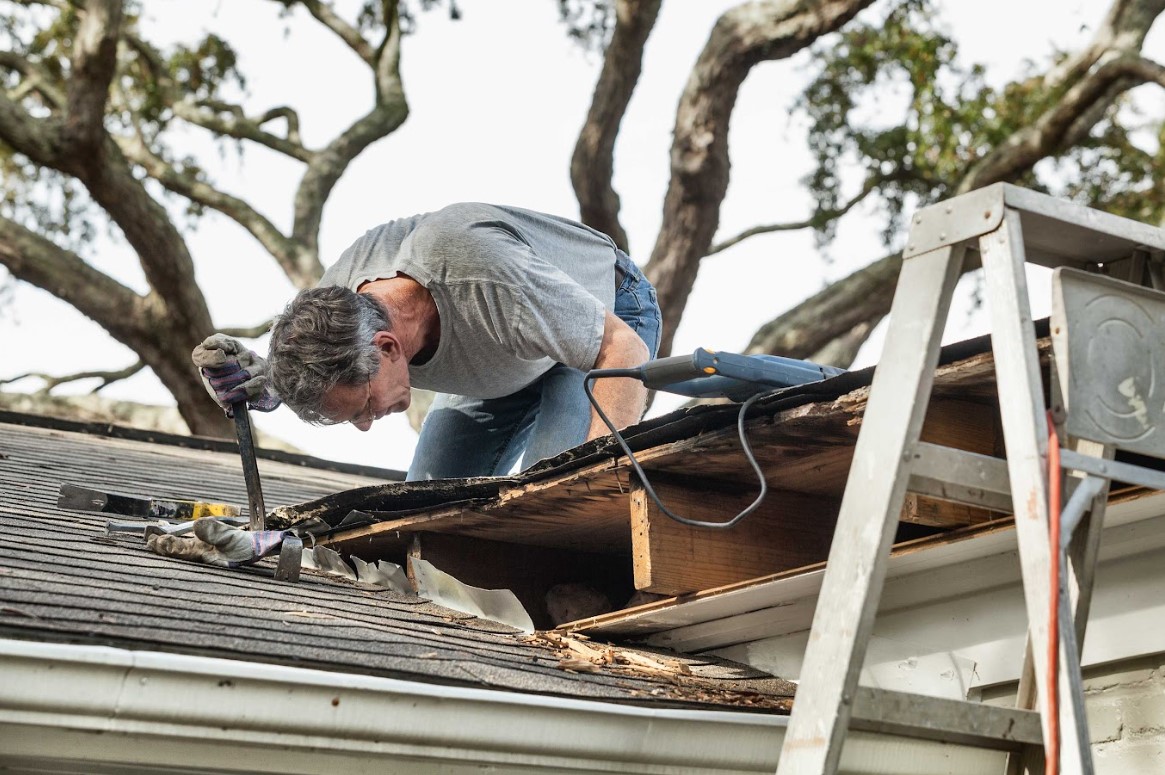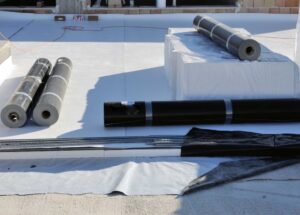A Smart Roof Is a Safe Roof—Why Now Is the Time to Prepare
If you live in Ventura County, you already know the rainy season doesn’t give much warning. And if your roof isn’t ready, you’re risking one of your biggest investments—your home.
This fall roofing checklist is built to help you prepare your roof for winter, avoid costly surprises, and make smart, proactive decisions before the first storm rolls in.
In this post, you’ll learn:
- What goes into Ventura County winter roof preparation
- What to check (and when to call a pro)
- How long your roof should last—and when it’s time to act
- What Shelter Roofing & Solar offers that others don’t
Need help now? Shelter Roofing & Solar installs both roofing and solar in-house—no subs, no delays, and no confusion.
Why Ventura County Winter Roof Preparation Matters
This region may not deal with snow, but storm damage from wind-driven rain is a real risk. Most homes here are 30–50 years old. That means a lot of roofs are working on borrowed time—especially those with older underlayment or outdated ventilation systems.
The reality is, Ventura County winter roof preparation is less about the weather itself and more about protecting your roof from preventable failures when it finally arrives.
Local conditions like:
- Rapid leaf buildup from surrounding trees
- Tight rain windows with poor drying time
- Aging asphalt and tile roofs with failing flashing
…all make preparing your roof for winter a smart, high-ROI move—not just a seasonal task.
What to Know Before You Start
Getting your roof winter-ready doesn’t mean guessing. Here’s what to keep in mind:
- Budget: Roof repairs range from $995–$5,000; replacements from $12,000–$25,000+
- Permits: Needed for most replacements, but not all repairs
- Timeline: Repairs take 1–2 days, full jobs 4–5 days—weather dependent
- Materials: We use top-tier brands (Owens Corning, GAF, CertainTeed) for durability and warranty
- Warranty: Shelter Roofing & Solar offers up to 25 years on workmanship
Once you understand the basics, it’s time to walk through the steps. Use this checklist to prepare your roof for winter, starting with what you can see—and ending with what only a trained eye can catch.
How to Prepare Your Roof for Winter: Your Fall Checklist
Here’s how to prepare your roof for winter—plain and simple:
1. Check the Attic
Water stains or moldy smells? That leak started long before you noticed.
2. Inspect Shingles or Tiles
Look for cracked, missing, or lifted materials. For tile roofs, misaligned rows and exposed underlayment are red flags.
3. Clear Gutters and Valleys
Debris in roof valleys and gutters traps moisture. That’s how rot and mold get in.
4. Examine Flashing and Penetrations
Flashing around chimneys, skylights, and vents is often the first thing to fail. Don’t wait for a ceiling stain to find out.
5. Trim Trees Back
Wind and falling limbs cause serious damage—especially when overhanging branches aren’t addressed in time.
6. Schedule a Professional Roof Inspection
Even if everything looks fine, a trained technician can spot issues you’d never notice. We use EagleView aerial imagery and SumoQuote to give accurate estimates with no guesswork.
What to Expect During a Fall Roofing Inspection
If you’ve never had a seasonal roof inspection, here’s what to expect. Our team checks for visible surface wear, loose shingles or tiles, failing flashing, signs of underlayment issues, ventilation blockages, and water intrusion. We’ll assess attic airflow and insulation conditions too. Using EagleView imaging, we measure roof dimensions and slopes accurately without setting foot on your roof.
The result? A straightforward report and quote, with photos and recommended next steps—delivered with clarity and zero pressure.

Top 3 Mistakes Homeowners Make When Prepping for Winter
Roof issues don’t usually show up until it’s too late—but most are preventable. Here are the top missteps we see:
1. Waiting Too Long
By the time the first storm hits, roofing schedules are full and costs go up.
2. Assuming “No Leaks” Means “No Problem”
Underlayment failure often goes unnoticed until water damage has already spread.
3. Only Cleaning Gutters
Gutters matter—but so do flashings, valleys, penetrations, and attic ventilation. A clean gutter won’t stop a cracked flashing from leaking.
Avoid these pitfalls, and your fall prep becomes an investment—not a scramble.
What Insurance Usually Doesn’t Cover in Winter Roof Damage
Many homeowners assume insurance will cover roof leaks—but that’s only partly true. Damage caused by a storm may be covered, but issues from neglect or aging materials usually aren’t.
If your roof is over 20 years old and you haven’t had it inspected, your policy could deny a claim for “deferred maintenance.” That’s why fall inspections and documented repairs are not just smart—they protect your financial position too.
Deep Dive: Roof Materials, Resets, and Long-Term Payoff
If you’re comparing costs or planning ahead, your roofing material matters just as much as timing. Here’s what works best in Ventura County:
| Material | Pros | Considerations |
| Asphalt Shingles | Affordable, fast to install | Shorter lifespan (25–30 years) |
| Concrete Tile | Long-lasting, fire-resistant | Underlayment wears out before the tile |
| Clay Tile | Durable, great in heat | Higher upfront cost, requires good support |
| Synthetic Slate | Lightweight, high-end appearance | Premium cost, but 50+ year lifespan |
For tile roofs, we often recommend a tile reset. This involves removing your existing tile, installing new underlayment and flashing, then reinstalling the tile. It’s cost-effective, meets local code, and protects your home long-term.
We’re certified by major manufacturers and offer lifetime warranties on many materials—something most low-cost installers can’t match.
Moorpark Roofing FAQs: Winter Roof Prep and Long-Term Value
Can you reuse my existing roof tiles during winter roof preparation?
Yes—this process is known as a tile reset. We remove your tile, replace the worn-out underlayment, install new flashing, and reinstall the tile. It’s a great way to extend your roof’s life and prepare for Ventura County’s winter rains without paying for a full replacement.
What is the average roof lifespan in Ventura County?
Most roofs in this area last 30–40 years, depending on material and maintenance. However, underlayment often fails first—especially in older tile systems. If your roof is over 20 years old, it’s time to get a professional opinion before the rainy season.
What roofing materials perform best during Ventura’s rainy season?
Architectural shingles, concrete tile, and synthetic slate are proven choices for this region. What matters most is proper underlayment, flashing, and installation. We install systems specifically designed to handle winter roofing conditions in Ventura County.
Are there tax incentives for replacing my roof this fall?
Yes. If you bundle roof work with solar, you could qualify for the 30% federal solar tax credit—even on parts of the roofing system. This is especially useful if you’re planning upgrades before year-end to maximize tax savings.
Final Take: A Little Planning Now Beats Emergency Repairs Later
A winter-ready roof is one of the best investments you can make in your home. Don’t wait for rain to find out something’s wrong. If you’re serious about protecting your property—and making decisions based on value, not urgency—this is the time to act.
Shelter Roofing & Solar has been serving Ventura County for over four decades. We’re family-owned, highly certified, and we install both roofing and solar systems using our own crews.
Schedule your inspection today—before your minor issue becomes a major cost.




